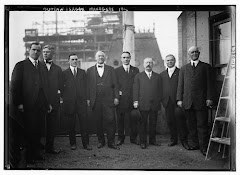
Editor's Note: Please welcome our new contributor to Yinzer Book Club: BeezusKiddo! She is going to help me pick up the slack for those unproductive dorks, Trixie and Spudbabe.
Reviewer: BeezusKiddo
Rating: 5 Pierogies
Review: Since I not infrequently leave work at six, get home and give Baby Beez a bath and a snuggle and put her to bed at 7:30 and then work from 8 til 10 or 11, I don’t have a whole lot of leisure reading time. I try to read for a few minutes before falling asleep because I tend not to sleep well when I go directly from work time to bed time. Over the last couple weeks I have plowed through all three books of The Hunger Games, and my “few minutes of reading” has turned into “staying up entirely too late reading,” which has led to several three-coffee-mornings.
The basic plot isn’t particularly new: In post-apocalyptic America, people are forced to fight to the death as a form of political manipulation and entertainment. Collins makes things more interesting with a female lead who feels human, not (completely) rigid and symbolic. The romantic plotlines, while at times predictable, at least are more interesting than the “woman falling all over herself to attract the man of her dreams” idea we’re so used to seeing.
The to-the-death competition takes place in an enormous Arena, designed with care and fatally booby-trapped by the Capitol-employed Gamemakers. Every inch of the Arena is recorded by surveillance cameras, and the bloody competition is televised to the masses. Every man, woman, and child is of course mandated by the government to watch. The Arena, and all of its horrors, was extremely creative and vivid, and my absolute favorite part of the book. If Collins wrote a whole series just detailing all 73 of the previous Hunger Games (the book starts with the 74th annual Games) and their Arenas, I’d be in first in line to read them. It is gruesome and terrifying and enthralling.
Collins does a good job of creating an imaginary new America (Panem), divided into districts that are starving and struggling to survive, but controlled by an opulant, wasteful Capitol. Collins describes how each district focuses on a different industry, but her exploration of the individual districts (besides 12, where the main characters were from) was limited. I would have been interested in more in depth treatment of each of the districts, to see how current America fits in to Collin’s Panem. She tells us that District 12 is in Appalachia, and the Capitol appears to be in the Rockies, but I think that’s it. If she discussed the geography of the other districts, she did so quickly and I missed it.
Collins’ world is very visual. She spends great care to discuss the appearance of the characters and their surroundings, which really brings the Arena (where the deathmatch takes place), and the Hunger Games and their associated celebrations to life. However, this teeters into the overindulgent when she gets to discussing fashion, and I don’t think the books would have suffered if she pared down the what seems like page after page after page of description of what certain characters were wearing at times.
The names Collins chose for her characters often distracted me. A sampling: Katniss Everdeen, Primrose Everdeen, Peeta Mellark, Gale Hazelle (I think that was his last name…), Cinna, at one point there’s a Lavinia, and Castor and Pollux. I felt like some names were too future-y and “uneek”, while the other ones too heavy-handed in their referencing. It’s a petty point, but it was enough to distract me while reading.
I’ve heaped on a lot more criticism here than praise, because too much praise would give away the story. The story’s full of surprises and twists and turns. It’s refreshing and creative and dark and different.

No comments:
Post a Comment